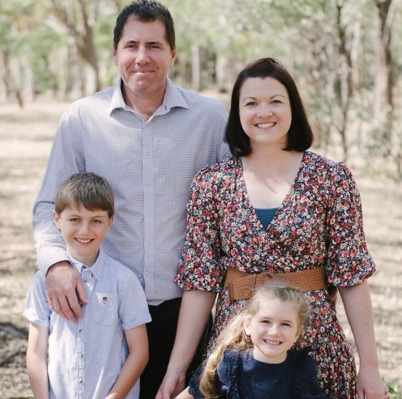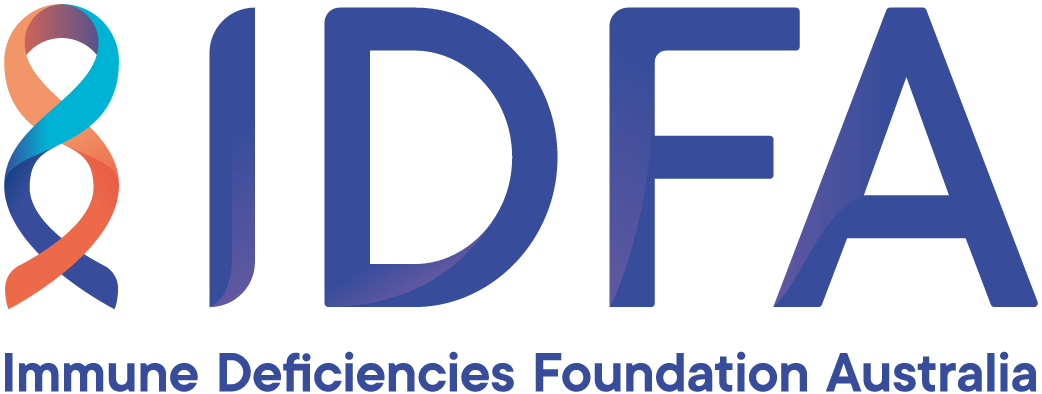Managing your child’s return to the classroom
This information has been provided by IDFA member, teacher and mum of two, Bianca. You can read more about Bianca’s story here.
Bianca is one of our friendly family support group moderators. If you are interested in joining one of family support groups for parents or families, please email us.
Please note that this is general advice only and should not replace the advice given by your child’s medical or support team. Members accept responsibility for their own medical treatment and decisions with their treating clinicians.

Employing the following tips and strategies may offer you some peace of mind as your child returns to the classroom in 2022:
- Hand sanitiser: Either ask your school for additional hand sanitiser in your child’s room or provide hand sanitiser. As a teacher, I have previously purchased a one litre bottle of hand sanitiser for my children’s classrooms. This means that it is always available for all students, not just your immune compromised child, which reduces the ‘stigma’ for your child needing to use it.
- Disinfectant wipes: You could provide a packet of disinfectant wipes for your child’s desk and ask that an individual wipe is used for their desk at the end of each day (or if your child is older, encourage them to use a disinfectant wipe on their desk in the morning before the day begins).
- Medical advice: Seek guidance from your immunologist/paediatrician as to the best approach for your child if there is a child or staff member that contracts COVID-19 in the classroom.
- Planning ahead: It can be helpful to have a plan for who will be able to stay home and look after your child if they need to stay out of the classroom for a few days due to a child or staff member contracting COVID-19. Perhaps an extended family member can be relied upon for certain days of the week, as required.
- Meet with your child’s teacher: Contact your child’s teacher for 2022 and either correspond via email or ask for a meeting to ensure they are aware of your child’s immunodeficiency. This can include discussing protective measures around COVID-19 such as:
> Encouraging your child to wash their hands with soap before they leave the classroom for lunch breaks;
> Discussing the use of disinfectant wipes for your child’s desk;
> Discussing hand sanitiser use in the classroom for both teaching staff and students;
> Ensuring your child’s pens/pencils are not shared with other children and/or that your child does not use ‘communal stationary’ (which can be a practice in some classrooms).
- Developing a lesson plan: It is helpful to develop a plan for how your child can continue to learn if they need to have regular breaks from the classroom (either due to medical appointments, if there are students impacted by COVID-19 in the classroom or if your child is unwell). Your child’s teacher can provide you with an overall plan for the term and what is being covered in each subject each week. This means you can help them learn content if they are at home with you or another parent/family member.
- Communication: Have open conversations about COVID-19 with your child. This means they can comfortably share any concerns they have. Children may feel worried about the virus, for example, or worried about returning to the classroom.
- Managing separation anxiety: Some children may find it difficult to be separated from parents and carers who they have spent considerable time with over the last few months. Ways to support your child with separation from you or other care providers can include:
> Taking time for your child to share their thoughts and feelings with you;
> Talking through the exciting parts of school (seeing friends, learning new things, making cool artwork). One tip is to focus on one great thing about that day every day. For example: “On Wednesdays you have art class that will make today great. Friday is when you have music class – I can’t wait to hear what you did in music when the school day ends!”
> Your child may like to have something from home with them, like a picture of their family, a necklace, a stuffed animal or something small that can go in their pocket.
- Talk to your child about ways to stay safe while at school:
For example, if there is no soap left in the student bathroom, what can they do? A solution could be to provide a bottle of hand soap that can be left in their classroom for your child to use.
Put a small bottle of hand sanitiser into your child’s backpack, another one for in their school desk and even one for their lunchbox. This way, if they have forgotten to wash their hands before lunch, they can use that to practice good hand hygiene.
If there is another child sick (coughing/sneezing) sitting next to them, what can they do? A solution could be to ask the teacher to open a window and have your child move away/change desks from the child with cold or flu symptoms.
- Resources and further information: There are some excellent resources available to assist in conversations with your child about COVID-19 and returning to school including from:
> Government Health Websites: NSW Health;
> World Health Organisation – Helping Children Cope.
IDFA would like to send their gratitude and thanks to Bianca for providing this valuable information.
For more information on this topic, we also recommend our Guide For Schools resource which you can read here.
